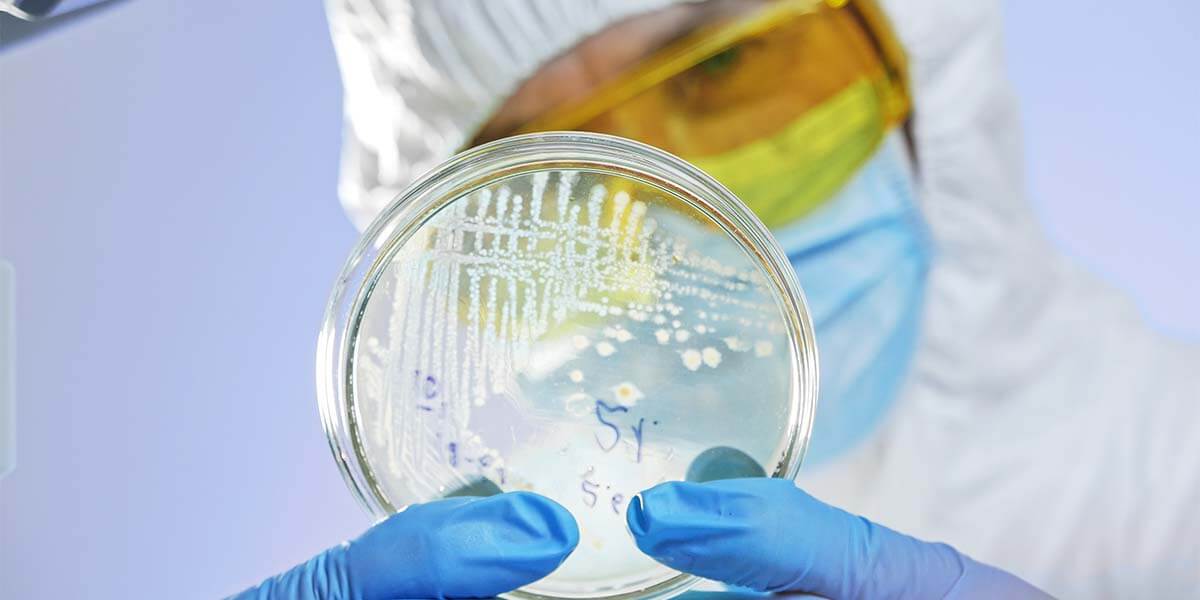Can you catch Legionnaires’ disease from showers?
Yes, you can catch Legionnaires’ disease from a shower. It is unlikely that you will catch the disease in your own home if you live there full time. However, you stand a higher chance of catching the disease from a shower in a gym, hotel, hospital, or office—anywhere with a large domestic water system. Water turnover may be less frequent if these places are not in constant use.
How do you catch Legionnaires’ disease from showers?
Given the right conditions, Legionella bacteria can grow in any water system. Any body of water between 20–45°C is at risk as the bacteria can only grow within this temperature range. Also, nutrients including rust, sludge, scale, sediment, and algae help the bacteria thrive. These are a particular problem when the water is stagnant within a system (for example, if a shower or tap is not regularly used).
When people turn on the shower or tap, water droplets contaminated with Legionella bacteria spread via the spray that is produced in small droplets known as aerosols. People breathe these aerosols into the lungs via aspiration as they are small enough to inhale. The lungs then become infected with Legionella bacteria, and the person catches Legionnaires’ disease or Pontiac fever.
It is also possible to contract the disease by drinking water containing Legionella bacteria. People with swallowing difficulties are at increased risk.
What are the symptoms of Legionnaires’ disease?
People usually suffer the initial symptoms of the disease around two to ten days after infection. However, not everyone exposed to the bacteria goes on to develop symptoms; the most at risk are people over 50 and those with weakened immune systems.
In general, early signs of the disease are similar to flu and may include:
- High temperature, feverishness, chills
- Dry cough
- Muscle aches and pains
- Loss of strength (asthenia)
- Headaches
If untreated, the infection may become more severe within the first week, and infected people may experience further symptoms such as coughing up green phlegm and becoming short of breath. They may also have chest pain when breathing.
Some people who have Legionnaires’ disease suffer from nausea, vomiting, diarrhoea and abdominal pain. Almost half of the patients suffer from disorders related to the nervous system, such as confusion, delirium, depression, disorientation, and hallucinations.
If you think you might have been exposed to Legionella bacteria or developed symptoms such as fever, cough, chills, or muscle aches, it is vital to see a doctor as soon as possible. Telling a medical professional where you have travelled recently is also important as you might have been exposed to a known outbreak.
How to prevent legionnaires disease in showers?
The first question to ask is where does the shower water come from. It will generally come from a water tank, which may be heated. If so, at what temperature is the hot water storage tank set? Any temperature between 20–45°C will allow Legionella bacteria to thrive. Therefore, the water must be stored at 60°C and distributed at a temperature above 50°C to ensure bacteria cannot survive.
Additionally, if the shower water comes from a water tank, it must be inspected regularly and kept clean. It is a good idea to have a tight-fitting lid on the tank, which will prevent debris from entering and rust, biofilm, and corrosion from forming on the inside. Legionella bacteria feed on these, so cutting off their food supply is an efficient way of stopping the spread.
The area you live in is also a risk factor for Legionella bacteria. Geology affects how hard the water is in any given area. Although rainfall is soft, once it begins to filter through rock, minerals including calcium and magnesium begin to dissolve in the water. Water with a high mineral content is known as hard water.
When water supply companies pump hard water to homes, it causes limescale buildup in pipes, taps, and showerheads. Limescale provides Legionella bacteria with nutrients, which help them grow. Therefore, hard water areas are particularly susceptible to Legionella bacteria growth, and showerheads and taps must be descaled regularly to reduce limescale buildup.
|
UK Town and cities with the hardest water |
UK counties with the hardest water |
| Bath | Bedfordshire |
| Bristol | Berkshire |
| Guildford | Buckinghamshire |
| Hemel Hempstead | Cambridgeshire |
| Milton Keynes | Essex |
| Oxford | Gloucestershire |
| Reading | Hampshire |
| Slough | Hertfordshire |
| Swindon | Kent |
| Walton-on-Thames | Oxfordshire |
How often should you run a shower to prevent Legionella?
Legionella bacteria can build up in any shower, tap, or water outlet that is not used regularly as the water in the system remains stagnant. When turned on, bacteria will flow out of the system with water, and whoever is using the shower will breathe in aerosols containing Legionella bacteria. This is a greater concern in hotels and offices, for example, where showers and taps may go unused for prolonged periods. However, even in homes, any guest bathroom could be at risk.
It is advisable to run any infrequently used showers or taps for about two minutes each week or until the hot and cold water are the same temperature as frequently used outlets. Make sure to leave the room to avoid potentially breathing in aerosols containing Legionella bacteria.
How to disinfect the showerhead to prevent Legionnaires’ disease
- Remove the showerhead from the hose
- Take apart the showerhead
- Put the parts from the showerhead and the hose in the sink and soak in hot water with an appropriate showerhead cleaner
- Use a brush to remove stubborn residue
- Rinse all the parts with clean water
- Rinse with water over the clean parts to remove the showerhead disinfection cleaner
- Dry with a clean towel and leave to dry
- Reassemble the showerhead and attach it to the hose
Are there any technological developments to help kill Legionella bacteria in showers?
There are many devices that market themselves as automatic flushing units. These products claim to flush underused outlets, thus preventing water stagnation and reducing Legionella bacteria build-up risk.
4 failsafe ways to minimise legionella in your shower
- Ensure the shower is in frequent use. If it isn’t, consider removing the shower
- If an infrequently used shower cannot be removed, ensure it’s flushed regularly and you keep records of the activity.
- Keep the shower head and hose clean, and include strainers in any cleaning regime.
- Carry out a legionella risk assessment if you are responsible for a building.
Topics: Legionella Control

Written by Jon Greaves
Jon has progressively worked through operational roles, account management, technical management, and senior management roles over the last 16 years within one of the group companies before moving into the role of Water and Air Managing Director. Jon has experience across multiple sectors of water and air compliance, including district energy networks; data centres; healthcare; food and beverage and facilities management. Jon acted as a corresponding steering committee member on CIBSE CP1 – Heat Networks Code of Practice for the UK released in 2020.




